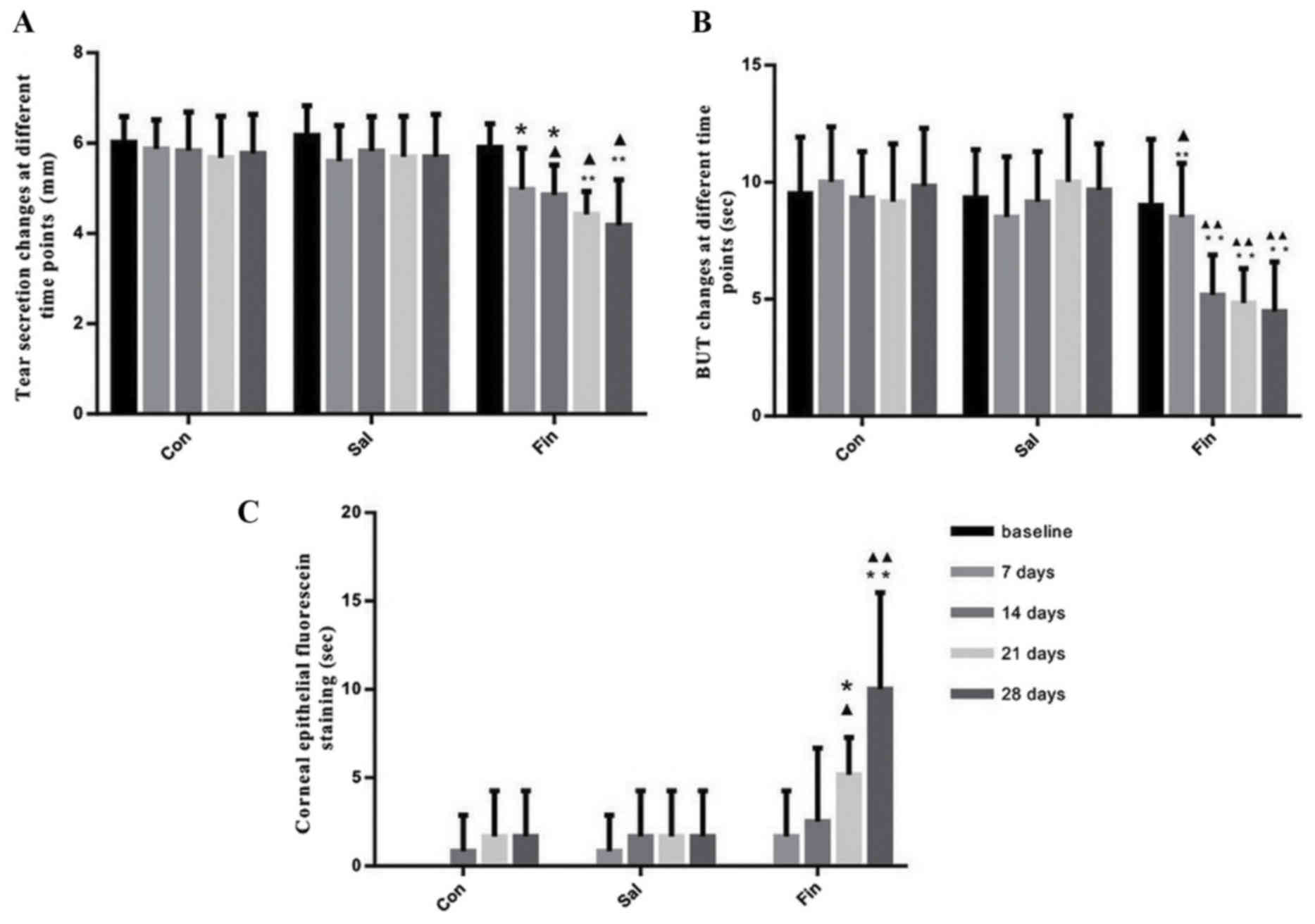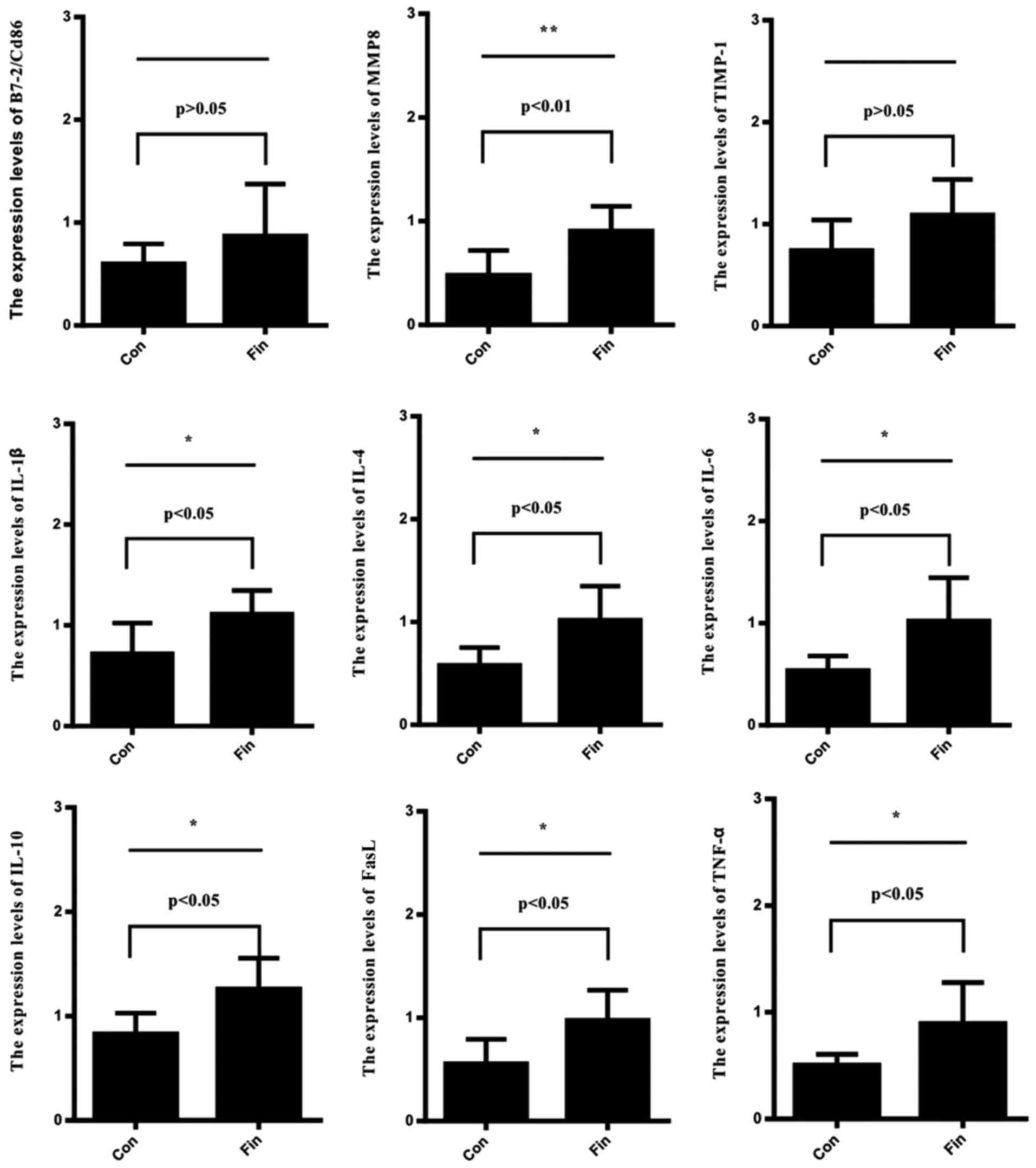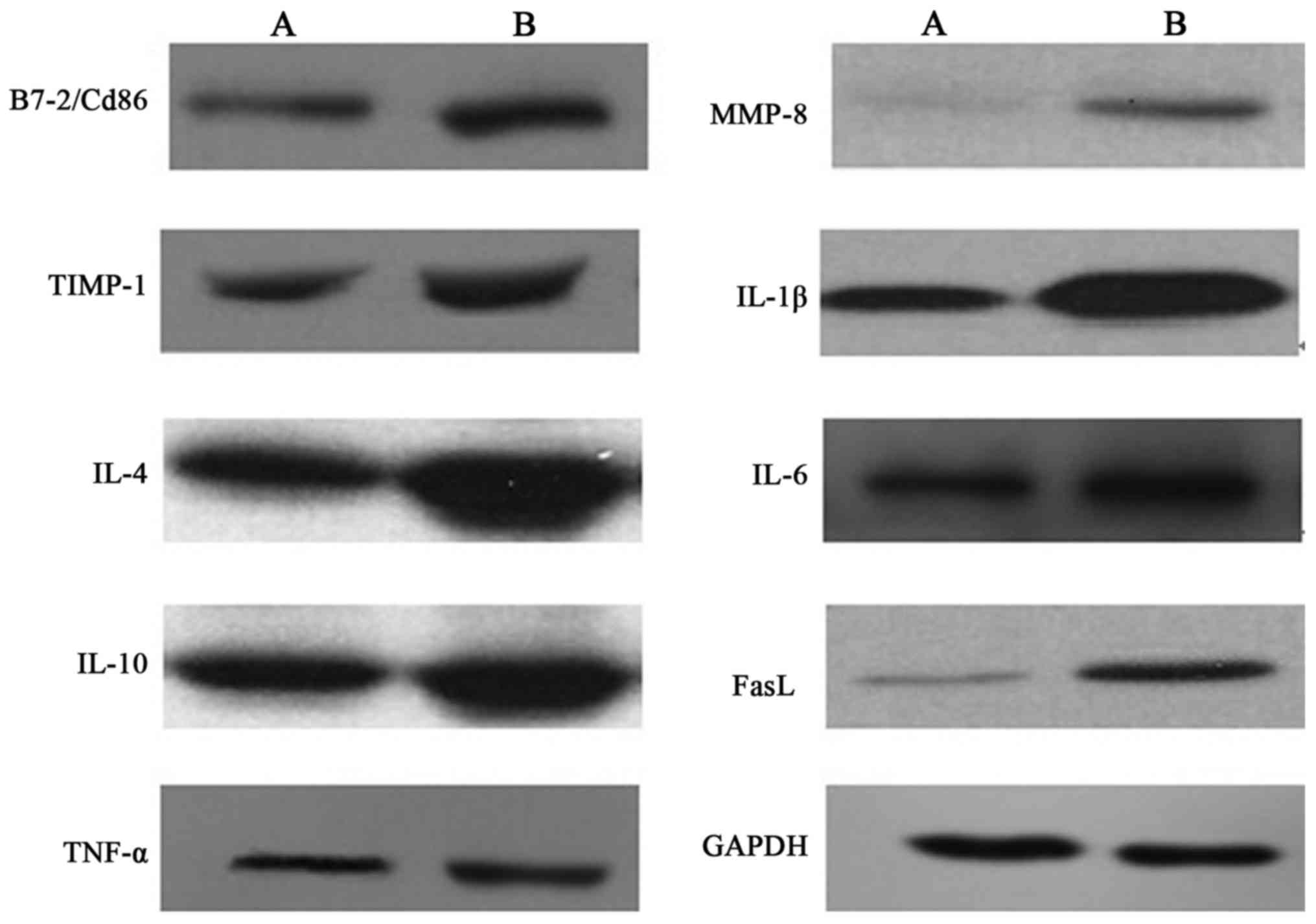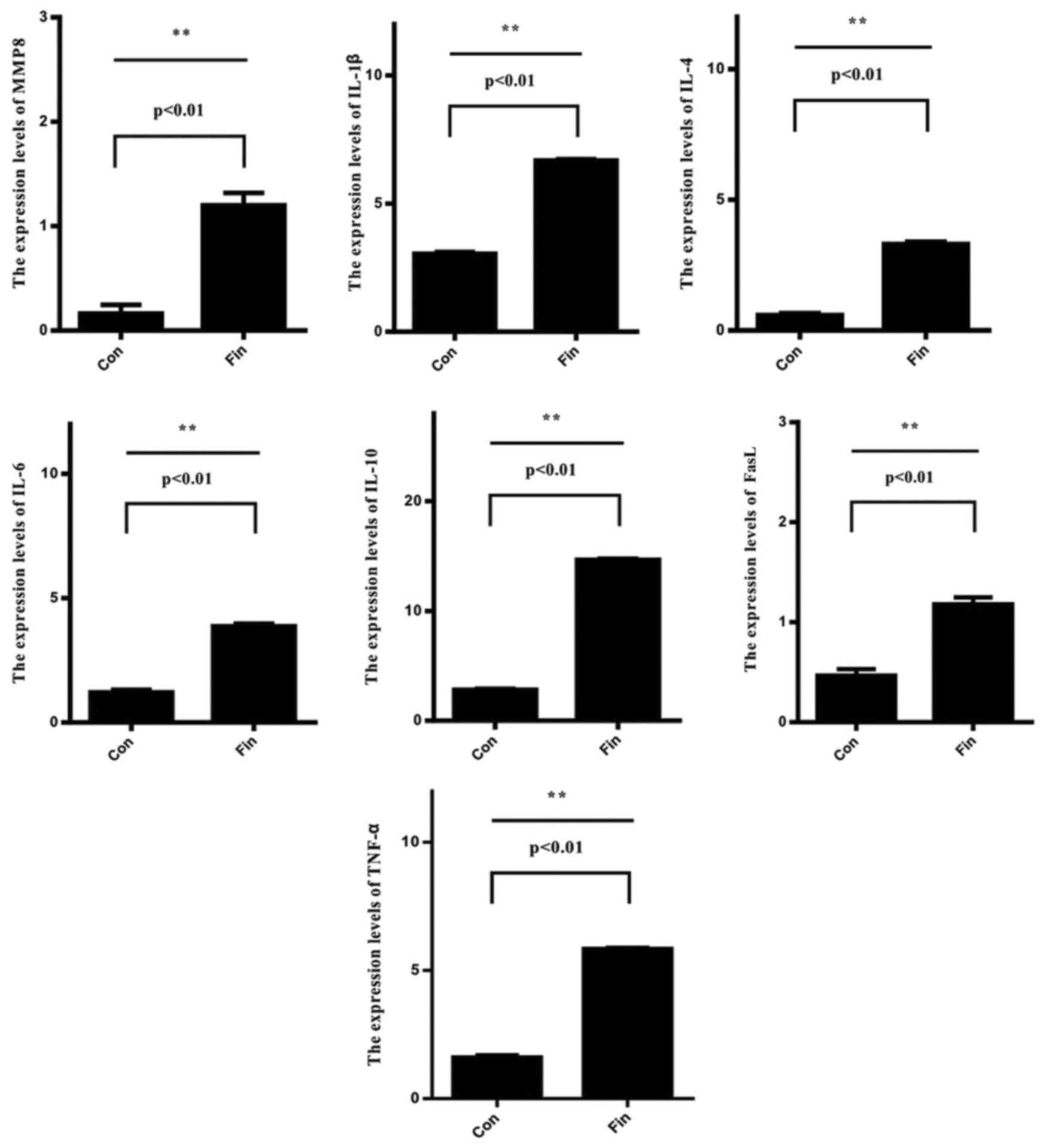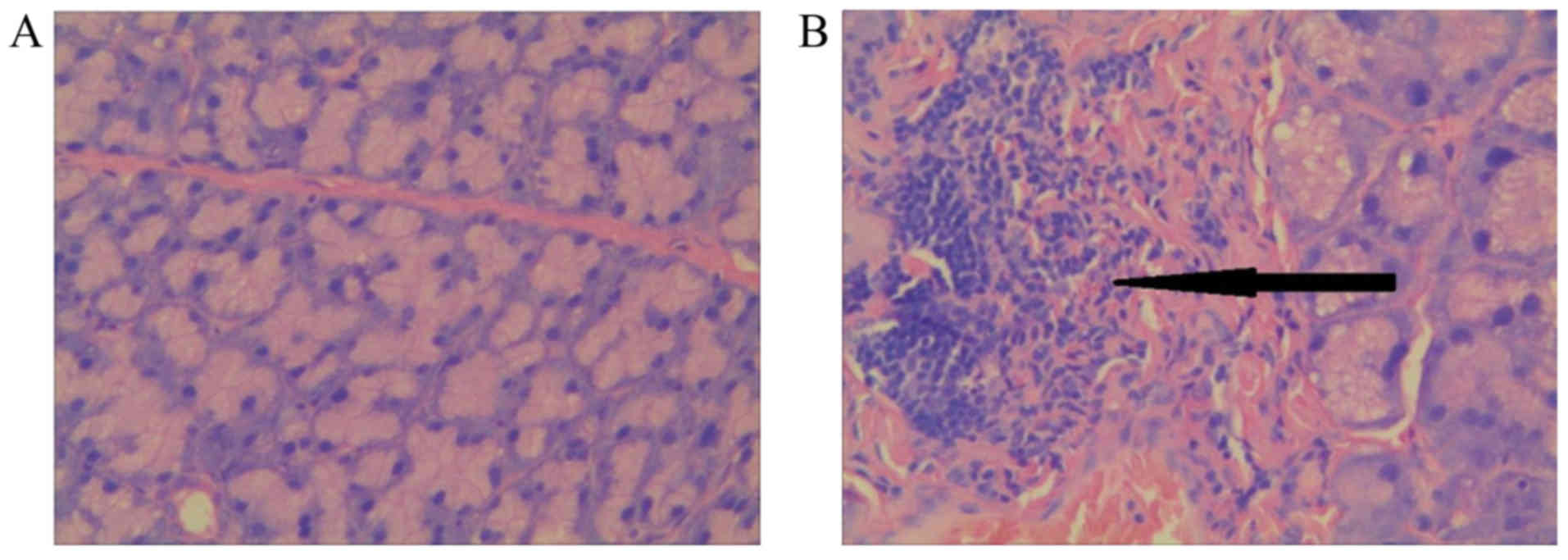Evaluation of a novel dry eye model induced by oral administration of finasteride
- Authors:
- Published online on: October 10, 2017 https://doi.org/10.3892/mmr.2017.7754
- Pages: 8763-8770
-
Copyright: © Li et al. This is an open access article distributed under the terms of Creative Commons Attribution License.
Metrics: Total
Views: 0 (Spandidos Publications: | PMC Statistics: )
Total PDF Downloads: 0 (Spandidos Publications: | PMC Statistics: )
Abstract
Dry eye is a common eye disease, and suitable animal models are indispensable for investigating the pathogenesis and developing treatments for dry eye. The present study was conducted to develop an androgen deficiency dry eye model induced by finasteride, and to evaluate ocular surface status and inflammatory cytokine gene expression in the lacrimal gland using a cytokine antibody array system. The results revealed that the antiandrogenic drug finasteride induced significant tear deficiency, and the histopathology results revealed significant inflammatory cell infiltration in the lacrimal gland. The cytokine antibody array system identified increased B7‑2 (also known as cluster of differentiation 86), interleukin (IL)‑1β, IL‑4, IL‑6, IL‑10, matrix metalloproteinase‑8, Fas ligand, tumor necrosis factor (TNF)‑α and metalloproteinase inhibitor 1 levels in the lacrimal gland of the dry eye model. These cytokines were validated as candidate markers through the use of western blot analysis and reverse transcription‑quantitative polymerase chain reaction. Both analyses confirmed a significant increase in proinflammatory cytokines, including IL‑1β, IL‑6 and TNF‑α, and anti‑inflammatory cytokines, including IL‑4 and IL‑10. The aforementioned data suggested that inflammation in antiandrogenic models resulted from a balance between inflammatory and anti‑inflammatory responses. Thus, direct finasteride administration may produce an applicable model for dry eye mediated by androgen deficiency. In addition, there may be a correlation between sex, steroid deficiency and the inflammatory response. The findings of the present study have provided useful information for the pathogenesis and diagnosis of dry eye mediated by androgen deficiency.



